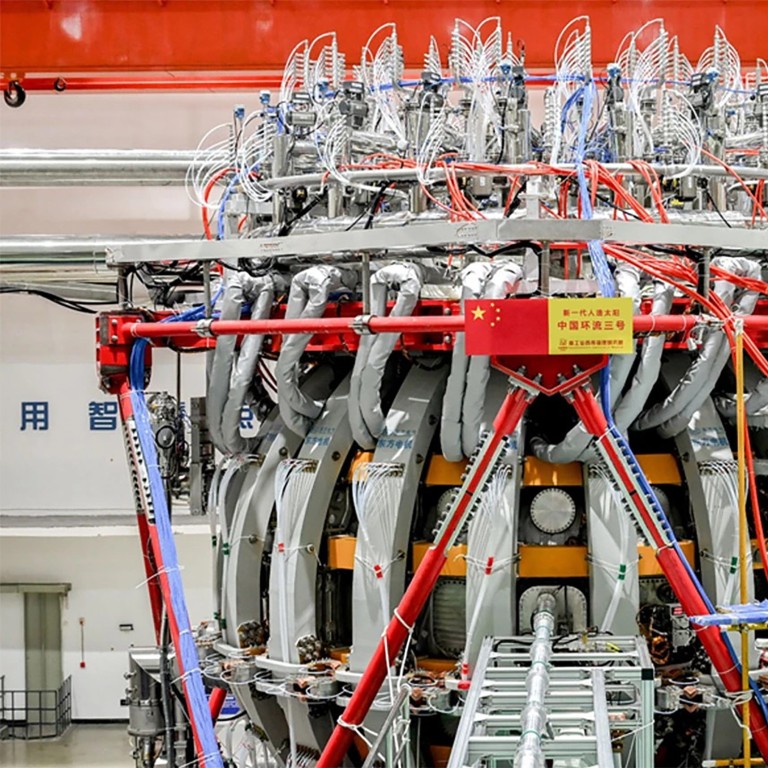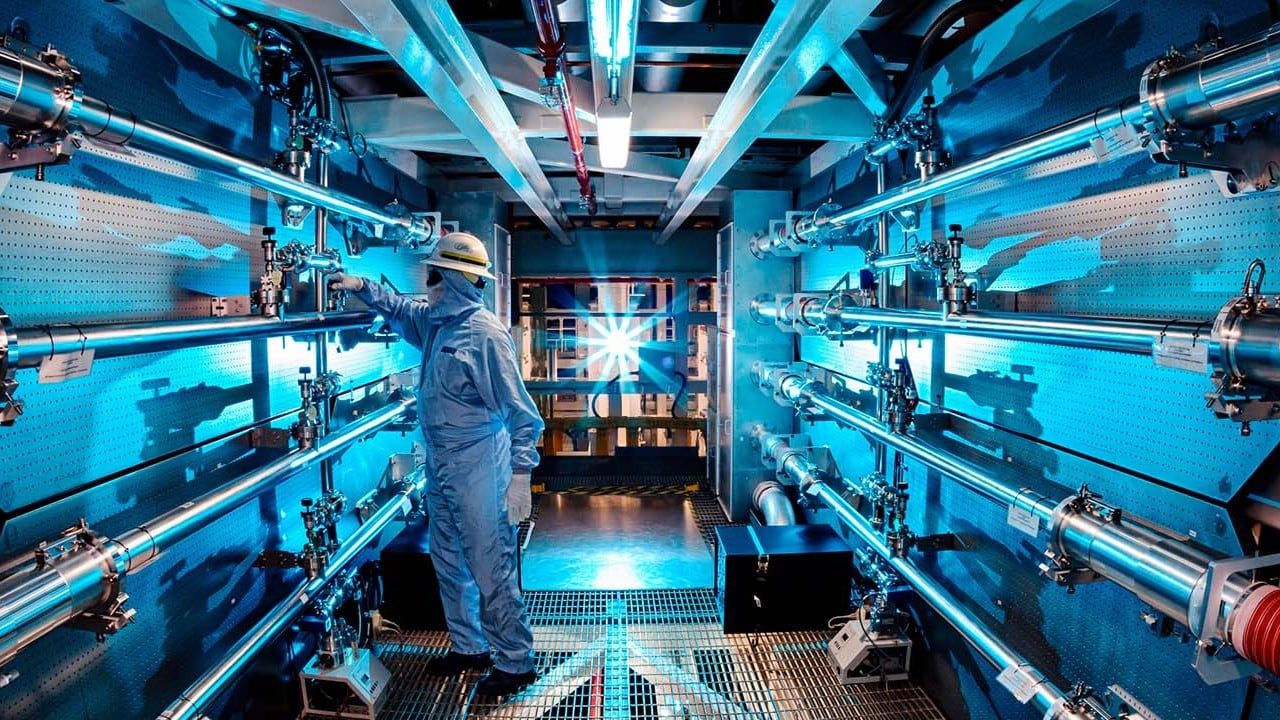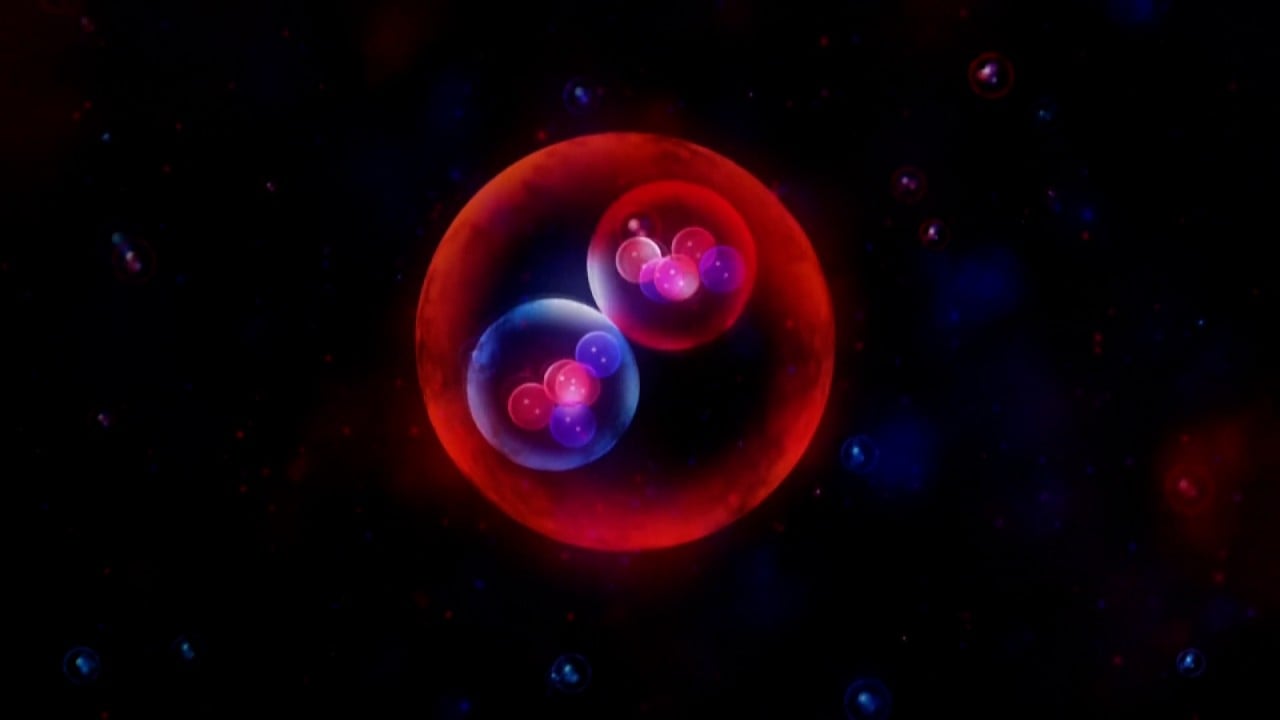
China’s new Fusion Energy Inc to pool national resources in push to build ‘artificial sun’
- Along with the company, collaborative innovation consortium of 25 entities and led by CNNC will help overcome key challenges in nuclear fusion field
- China aims to build an industrial prototype fusion reactor by 2035 and have the technology in large-scale commercial use by 2050
China is setting up a new state-owned company to pool resources from across the country to bring a nuclear fusion reactor – known as an artificial sun – to life, according to China National Nuclear Corporation (CNNC).
The formation of China Fusion Energy Inc was announced on December 29 during its opening ceremony, and unites China’s fusion energy research and development, which had been scattered among research institutes and private firms.
Chen Rui, founder of Startorus Fusion, a hi-tech company focusing on the commercial application of fusion energy and research and development for related technologies, said nuclear fusion had become a national priority.
“The State Council made it clear in a recent meeting that ‘controlled nuclear fusion is the only direction for future energy’, and the field is now developing very rapidly in Europe and the United States,” said Chen, whose company is not part of the new venture.
“In this context, China’s central government is starting to pay more attention to the industry.”
Along with the company, a collaborative innovation consortium comprising 25 entities and led by CNNC was established to work together to overcome some key challenges in the field of nuclear fusion.
“Controlled nuclear fusion as an ideal solution to the global energy challenge has become the forefront of scientific and technological competition among major countries, ” CNNC vice-president Cao Shudong said in a statement on the company’s website.
Cao said China needed to develop a “high-quality energy industry” and could do so by leveraging its central-governance system to focus national resources and industry input on the key project.
The members of the innovation consortium are mainly state-owned enterprises, including China Aerospace Science and Industry Corporation Limited and the State Grid Corporation of China. Four universities and a private company are also involved.
According to information posted by CNNC about the meeting, 13 members have been assigned to tackle the first set of 10 challenges that address issues such as high-temperature superconducting magnets, fusion reactor materials and high-performance energy storage.
An innovation fund was also set up at the conference to help secure funding.
According to Chen, the newly formed consortium is like an industry association that can better integrate upstream and downstream resources in the nuclear fusion industry.
Although it is not clear who the major shareholders of China Fusion Energy are, Chen said it was formed mainly from the fusion technology of the CNNC-affiliated Southwestern Institute of Physics (SWIP).
Similarly, last year the Institute of Plasma Physics (IPP), under the Chinese Academy of Sciences, in Anhui province, the local government and private companies jointly established a company called Neo Fusion based on technology from the institute.
China gives nod to ancient myth amid launch of nuclear fusion research centre
SWIP and IPP are the two main, longstanding national forces in fusion R&D.
“The main goal of these two companies is to accelerate the commercialisation of fusion energy, rather than focusing solely on technological research and development,” Chen said.
Much like the sun, nuclear fusion – often referred to as an “artificial sun” – generates energy by heating hydrogen atoms to over 100 million degrees Celsius (180 million Fahrenheit) and confining them long enough to fuse them into heavier atoms.
If realised, nuclear fusion could provide safe, clean and almost limitless energy. Nuclear fusion has none of the troublesome long-lived radioactive waste associated with nuclear fission, nor would it contribute to global warming.
There are several paths to controlled nuclear fusion, but most of the world’s scientific efforts have focused on “magnetic confinement” technology which heats and compresses plasma in a giant doughnut-shaped reactor called a tokamak.
However, the challenge remains of how to create a powerful plasma and confine it long enough for the hydrogen atoms to combine to produce net electricity.
Countries worldwide are continuously pouring money into nuclear fusion research because of its immense energy prospects. In December, nine organisations secured contracts worth £11.6 million (US$12.7 million) in total with the United Kingdom Atomic Energy Authority (UKAEA) to develop innovative technologies for fusion energy. In recent years, an increasing number of venture capital and private companies have also joined the race.
China is one of the world’s leading players. It filed more patents in nuclear fusion technology than any other country or region between 2011 and 2022, according to research by the Tokyo-based research company Astamuse.
It also aims to build an industrial prototype fusion reactor by 2035 and have the technology in large-scale commercial use by 2050.
In September, Lu Tiezhong, chairman of CNNC Nuclear Power, said the first power generated by controlled nuclear fusion “must come from our country, and we are working towards this goal”.
US aims to create nuclear fusion facility within 10 years, energy chief says
SWIP is the developer of tokamak machines such as the HL-2A. In August, it announced that its tokamak machine had for the first time generated a plasma current of more than 1 million amperes in high-confinement mode.



